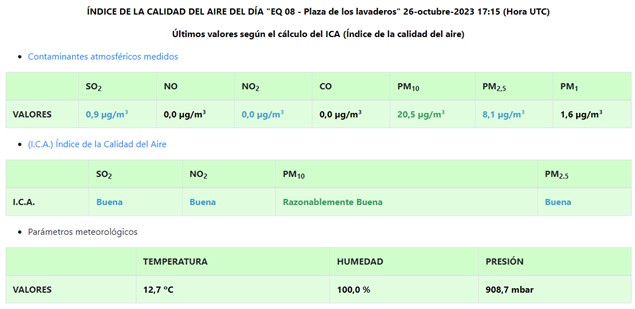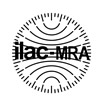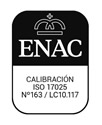When the city of Burgos decided to set up a real-time air quality monitoring network, it put out a call for tenders; this was won by Envira with the aim of deploying the entire network: from the installation, supply and maintenance of measuring devices to the software and the data acquisition and exploitation platform.
Monitoring device requirements
The development of the city’s air quality network required compact static stations or nodes that could operate at very extreme temperatures (-10 to 50ºC), have a certain degree of electrical autonomy and be located at the most representative points of the city in terms of air quality, preferably on the poles of the public lighting network so as not to interfere with the urban infrastructure.
This posed a challenge in terms of station design and selection, as the fixed station models commonly used for air quality monitoring are of considerable size and require space and some logistics for their implementation in terms of communications and power supply.
Solution: Nanoenvi EQ handheld stations
From the wide range of solutions proposed by Envira, the Burgos City Council chose the Nanoenvi EQ portable air quality monitoring stations. These stations are very compact in size, have a minimum protection rating of IP65 to withstand adverse weather conditions, and can be easily mounted on poles or lampposts, as required by the City Council.
They also have an internal battery and data communications via 4G and even other connections such as Wifi or Ethernet.
These portable stations would have as a reference for field calibration one of the two fixed air quality stations in the municipality, owned by the Community of Castilla y León, in order to readjust the calibration models and ensure that the error in data collection is minimal.
First step: location scouting
Once the type of measuring stations had been chosen, it was time to carry out a study to find the most suitable locations.
These had to be representative in order to know the quality of the air breathed by the citizens of Burgos, as well as to comply with the implementation requirements set out in Royal Decree 39/2017, of 27 January, which modifies RD 102/2011 in relation to the improvement of air quality and the distance to adjacent buildings, height above ground level, proximity to sources of emissions, among others.

In order to cover the whole city, three sites were chosen for each district, except in the periphery where two stations were installed plus one in the industrial area, making a total of 15 Nanoenvi EQ portable stations.
Envira DS software and data platform
To complete the implementation of the air quality network in the city of Burgos, data collection software and a platform for data management, monitoring and visualisation were required.
Envira provided its Envira DS environmental software solution, which not only collects and stores the data, but also makes it available in the form of reports and graphs, sends it to the citizens’ website and exports it to OpenData.
The management platform allows data storage and historical analysis, the setting of limit value alerts and the generation of manual and automatic reports.
It also has different dashboards where all the data, including the map, environmental parameters and alarm information, can be displayed in an orderly and efficient manner.
The Burgos City Council – Air Quality Citizen’s website (aytoburgos.es), also created and managed by Envira as part of the network deployment, has a simple, minimalist and responsive design that allows the location of the stations to be viewed on an interactive map. It also allows the visualisation, for each station, of the latest hourly data with the corresponding AQI (“Air Quality Index” (aytoburgos.es)), daily, monthly and annual reports.












